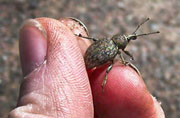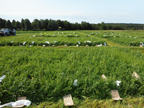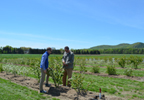
Corn and Soybean Disease Surveys Alert Farmers to Recent Trends
Ithaca, NY: July 3, 2018. As Northern New York farmers scout corn and soybean fields for any diseases that may impact crop health and yield, they can use five years’ worth of survey results as a guide to newly-emerging and common crop pathogens in Clinton, Essex, Franklin, Jefferson, Lewis and St. Lawrence counties
The corn and soybean disease survey project is funded by the farmer-driven Northern New York Agricultural Development Program. In addition to identifying current areas of concern and trends, the project provides regional farmers with the expertise of Cornell Cooperative Extension specialists who scout 12 sentinel fields of corn and 21 sentinel fields of soybeans. These fields on Northern New York farms represent different soils and growing conditions, and a variety of cropping practices.
Fields are assessed at various stages of crop growth. The Bergstrom Lab at Cornell University has cultured and analyzed field samples since 2013.
“Multi-year surveys better capture variations in weather from year-to-year, from a wet spring to drought in the past five years. The data helps farmers make more informed corn and soybean variety selections, evaluate soil and crop debris for potential problems, and plan management strategy,” said project leader and Cornell plant pathologist Dr. Gary C. Bergstrom, Ithaca, NY.
This disease survey project was started in 2013 as the first systematic assessment of corn and soybean diseases conducted in Northern New York in recent decades.
Results of the most recent NNY corn disease survey by county is online at https://fieldcrops.cals.cornell.edu/corn/diseases-corn/corn-disease-survey.
A statewide soybean disease survey is online at https://fieldcrops.cals.cornell.edu/soybeans/diseases-soybeans/soybean-disease-survey.
For more information, contact Cornell Cooperative Extension NNY Field Crop Specialists Kitty O’Neil, 315-854-1218, and Mike Hunter, 315-788-8450.
Funding for the Northern New York Agricultural Development Program is supported by the New York State Senate and administered by the New York State Department of Agriculture and Markets. Learn more at www.nnyagdev.org.
MORE INFORMATION:
An Overview of NNY Crop Disease Survey 2013-2017
. 2013-2016: Northern corn leaf blight was the dominate disease in corn
. 2014, 2015, 2017: Head smut re-emerged in corn, not identified in NY since the 1980s
. 2014: Northern stem canker identified in soybean; first confirmation in NY in Northern NY and Western NY
. 2016: First confirmation in NNY of Charcoal rot and Phytophthora root rot and charcoal rot, which favor dry conditions, in soybean
. 2017: Four corn diseases and four soybeans diseases identified, with common rust a widespread challenge in corn crops, and white mold, stem canker, and pod and stem blight the most commonly identified disease problems in soybean crops.
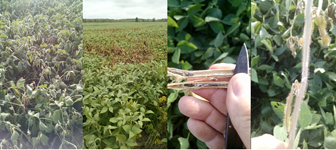 White mold discovered in Jefferson County, NY, 2017.
White mold discovered in Jefferson County, NY, 2017.
Photos: Mike Hunter
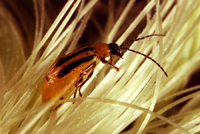
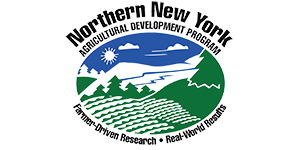 Research funded by the farmer-driven Northern New York Agricultural Development Program across 85 fields on farms in Northern New York where biocontrol nematodes have been applied to reduce snout beetle populations has shown that the biocontrol nematodes persist in fields after rotation to corn. Their populations are also known to increase in corn years 2-4 when corn rootworm larvae are feeding on corn roots.
Research funded by the farmer-driven Northern New York Agricultural Development Program across 85 fields on farms in Northern New York where biocontrol nematodes have been applied to reduce snout beetle populations has shown that the biocontrol nematodes persist in fields after rotation to corn. Their populations are also known to increase in corn years 2-4 when corn rootworm larvae are feeding on corn roots.